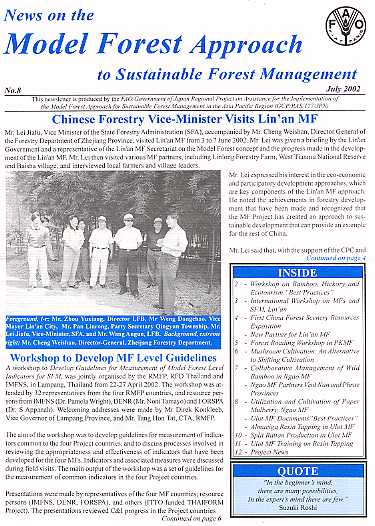
The Workshop was held on 7 June 2002 at Zhejiang Forestry College(ZFC), Lin'an City. Aproximately 70 partcipants, including the 8 participants from the RMFP "best practices" workshop from about 20 countries attended the workshop. Mr. Tang Hon Tat(FAO), Dr. Fusho Ozawa(Japan), Mr.Prof. Jiang Chunqian(China), Mr. Wang Anguo(LMB) and some distinguished speakers made presentations.

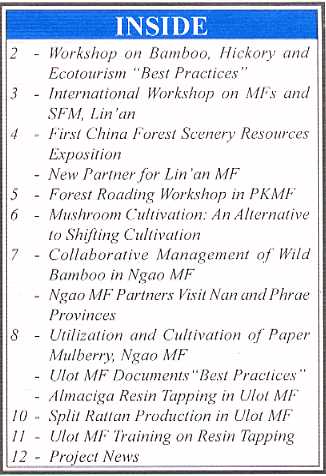
Presentations were made on:
Selection of bestforest type and design of forest management, by Mr. Liu Anzing;
Eco-cash forest and sustainable development, by Prof. LiZhangju, ZFC;
Eco-economic systems engineering, by Mr. Zhang Xiang-shu;People's University
of China;
The establishment of Lin 'an MF partnership and sustainable development, by Mr. Wang Anguo, LFB;
Devt of MFs in the Asia-Pacific Region, by Mr. Tang Hon Tat;
Status of sustainable forestry development in Zhejiang Province, by Prof. Duan Mubin, ZFC;
Development of MFs in China, by Prof. Jiang Chunqian;
Overview ofJapanese forestry, Japan's international forestry cooperation
and expectations of the MF approach for SFM, by Dr. Fusho Ozawa;
What is ecotourism? Concept and definitions, by Mr. Stephenvan der Mark,
INBAR;
Ecotourism and sustainable development of a village, by Mr.Wei Xinliang, ZFC;
Forest certification in China, by Prof. Lu Wenming, CAR
Community-based ecotourism : promoting economic development and resource
protection, by Ms. He Yeling, CAP.
Highlights of the presentations included:
Lin'an is ahead of other cities/counties in Zhejiang Province in terms
of forestry development, and NTFPs (including ecotourism) have become a
major source of income.
Eco-economic systems engineering can provide a logical and useful way to
identify critical issues and problems in resource development, and ways to address them.
Mixed, multi-storied, multi-aged Pinus masoniana and broad-leaved forests
are important to biodiversity and landscapes. Farmers have traditionally
collected litter and pine needles from the forest floor for use as mulch/fertiliser,
which helped to maintain mixed forests. However, economic returns are no
longer attractive and the litter/needles left to accumulate on the forest
floor are inhibiting regeneration of P. masoniana. New economically viable
uses for the litter/needles must be developed if the mixed forests are
to be maintained.
Japan has seen a shift from traditional single to multi-layered forests.
Revision of the Forestry Fundamental Law in 2001 set new guiding principles
to, inter alia, promote the multifunctional role of forests and the classification
of forests by function. Another forest management approach in Japan is
profit-sharing to promote investment in afforestation by landowners, tree-planting
groups or investors.
Past development of 'economic' forests in China has resulted in ecological
degradation. This has led to development of 'eco-economic' forests where
economic returns are realised from timber and NTFPs. The preference is
to shift cultivation to-ward mixed planting, 3-dimensional, multi-layered
manage-ment. It is essential to ensure farmers can earn a reasonable income
before his/her commitment can be obtained.
Forest certification is a new concept in China. Although about USD4 billion worth of furniture was exported (against about USD2.6 billion imported) in 200 1, demand for certification is still relatively small and is largely driven by market pressure, mainly from the USA and Europe.
The active involvement of local communities in the LMF partnership group
has made government decisions more pragmatic and implementation smoother.
LMF has promoted the participation of women, who account for 40% MF participants.
Ecotourism projects should establish their own identity, and develop a
strategy to attract visitors. Potential problems include marginalisation
of local communities, and environmental degradation through the single-minded
pursuit of profits.
Community-based tourism differs from ecotourism in emphasising project
management by the community.
The workshop gave participants the opportunity to learn about and discuss
various aspects of MF development and SFM.
By Jiang Chunqian, CAP, Tang Hon Tat and Dianne Gee, RMFP
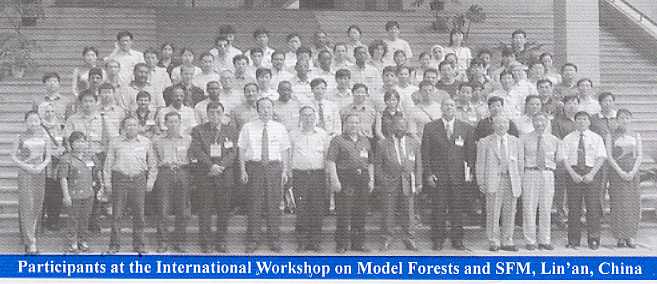
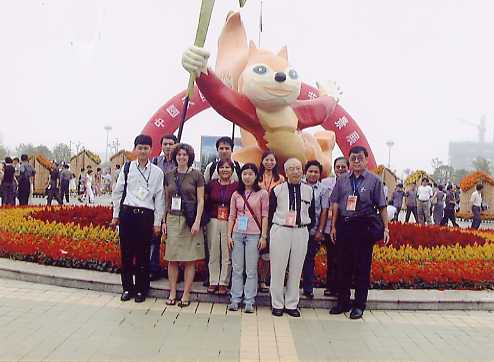
Photo sent by Mr. Tang Hon Tat
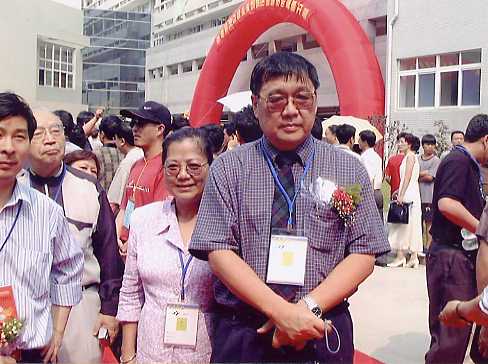
sent by Mr. Tang
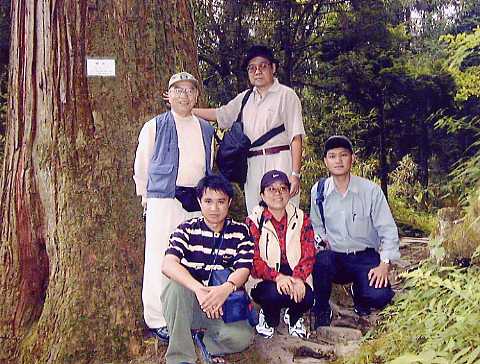
sent by Mr. Tang
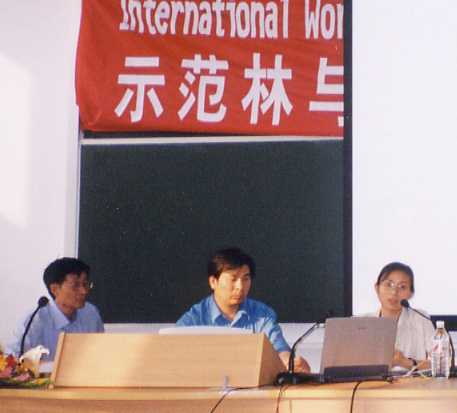
photo by Fusho Ozawa
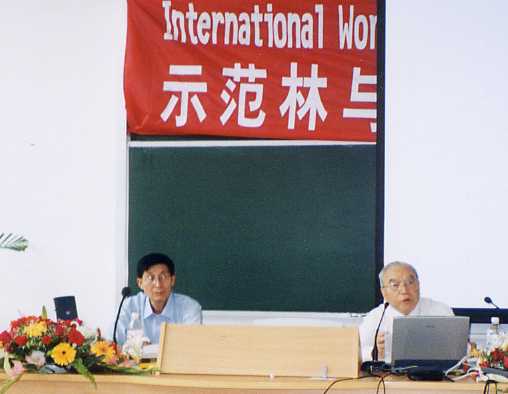
presentation by Dr. Fusho Ozawa